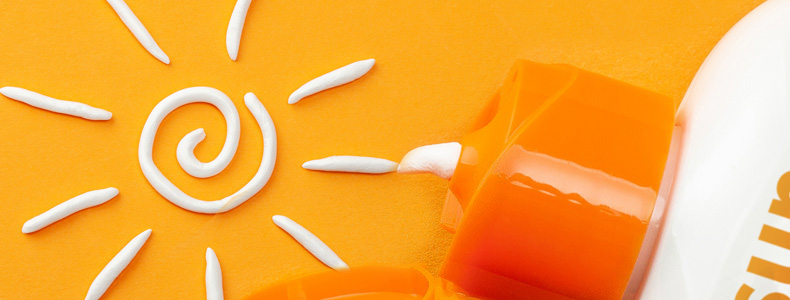While there is no evidence sunscreen is explicitly harmful to humans, that doesn’t mean you should apply it gratuitously. In fact, when deciding how much is too much, you’ll want to consider skin sensitivities, how long the skin is in the sun, and the power of the sunscreen.
We’ve all heard about the importance of sunscreen, but do you know how often you should be applying it? Undoubtedly, sunscreen should be a part of everyone’s summer safety practice, but with any type of chemical contact on the skin comes questions, especially when it comes to children.
Is sunscreen harmful?
With many people learning more and more about the products they use, one common product has been subjected to a great degree of scrutiny: sunscreen. So, what do you need to know about sunscreen and any hazards it may pose? First, we have to clarify what kind of sunscreen you’re talking about.
The two main kinds of sunscreen, also known as blockers, are physical and chemical.1
Physical blockers reflect ultraviolet rays from the sun and contain one of two active ingredients: zinc oxide or titanium dioxide. Chemical blockers, on the other hand, use chemicals in their ingredient list to absorb the sun's ultraviolet rays.1
As you can probably gather, more people are concerned about the ingredients in a bottle of sunscreen over its designed purpose: keeping you and your family safe from harmful UV rays. In fact, the ingredient responsible for most sunscreen skepticism is oxybenzone, which has been rumored to act as a hormone disrupter. But there has been no conclusive evidence that oxybenzone is harmful to humans.1
Whether you choose to avoid this ingredient, one thing is certain: Sunscreen is an important part of your family’s safety, with the American Academy of Dermatology recommending all children wear broad-spectrum sunscreen with an SPF of 30 or higher.2
How much is enough?
Now that we know it’s paramount you and your family use sunscreen when facing harmful UV rays, you may be wondering just how much sun block is enough – and how to apply it. As a general rule, you’ll want to use broad-spectrum sunscreen with an SPF of 30 or higher. This will help protect you and your loved ones from both UVA and UVB rays.2 You’ll also want to ensure your sunscreen is water resistant in the event you or your family plans on getting in or near the water.
In order to maximize protection, make sure to apply sunscreen generously about 30 minutes before going outdoors. This will help the sunscreen settle. You will want to reapply sunscreen every two hours and after swimming, sweating, or toweling off.3 However, make sure to check the instructions on the bottle, as times may vary by brand, ingredient list, and sunscreen type. Remember to pay special attention to commonly missed areas like ears, nose, lips, and tops of feet.
Signs of too much sun
There are a number of ways to tell if your child has had too much sun exposure. Here are some of the most common indicators of too much exposure to harmful UV rays:
Turning Pink.
In as little as 15 minutes, unprotected skin can be damaged by the sun’s UV rays.3 However, not all sunburns are quick to show. If you see your child turning pink, this could indicate the first stages of a burn. Because burns can take up to 12 hours to reveal themselves, it’s best to get your child out of the sun as soon as they start turning pink.3
Tanning.
No matter your best intentions, your child may still suffer a sunburn. In fact, most children get sunburned when left outdoors and unprotected for longer than expected. You can avoid this by reapplying sunscreen often, planning ahead, and keeping sun protection handy – even on those cool and cloudy days.
Remember, even if it’s cool and cloudy out, there are no guarantees your child won’t suffer a sunburn, because clouds do not block UV rays, but filter them – sometimes only slightly. Make sure to check UV levels before going out on your next adventure, and always keep sun protection handy.
Always use sunscreen
Summer, winter, sunny, or cloudy – your child needs sun protection. While the brand of sunscreen you choose doesn’t really matter, ensuring you have the right coverage for your day will help make all the difference. Remember to reapply often, and if your child starts showing signs of sunburn or too much sun exposure, remove them from the environment or cover them up.
Being diligent with sun protection can help prevent skin cancer in the future, so make sure to do your part and keep your children safe from harmful UV rays starting now.3
-
https://www.health.harvard.edu/staying-healthy/the-science-of-sunscreen
-
https://www.cdc.gov/earlycare/resources/outdoor-play-and-safety
Categories: Home Safety/Childproofing, Product Safety/Recalls, Safety Tips
